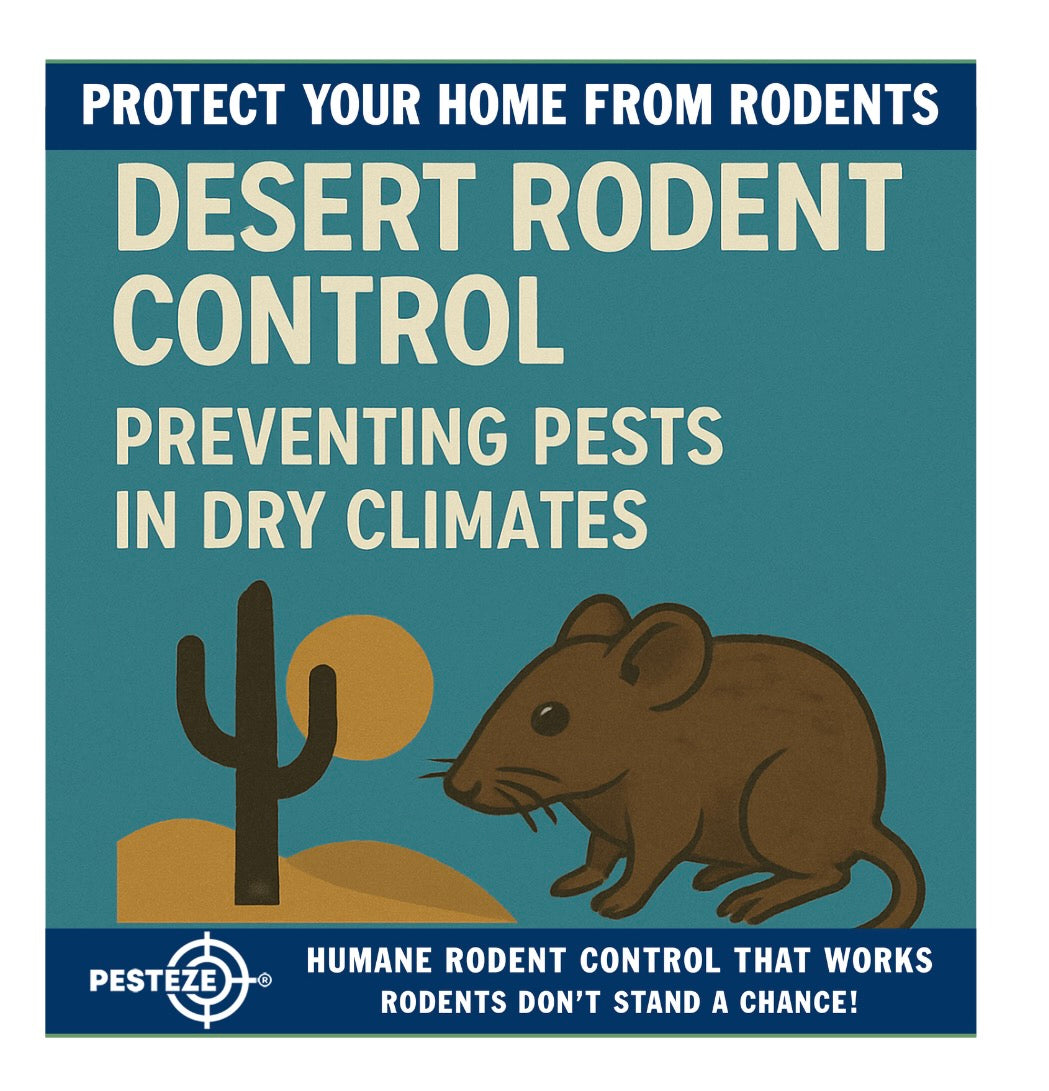DESERT RODENT CONTROL: PREVENTING PESTS IN DRY CLIMATES

DESERT RODENT CONTROL: PREVENTING PESTS IN DRY CLIMATES
SUMMARY
Rodents are surprisingly resilient in arid desert environments. Their search for water, food, and shelter often leads them into homes, gardens, and storage areas. Learn effective, region-specific strategies to prevent and manage rodent infestations in dry climates.
FEATURES
-
Water Access: Rodents are drawn to any moisture source in the desert.
-
Burrowing Behavior: Dry soil makes it easy for rodents to tunnel near homes.
-
Food Storage Threats: Rodents target pantries, pet food, and garden produce.
-
Extreme Heat Adaptation: Many desert rodents are active at night to avoid high temperatures.
-
Structural Vulnerabilities: Cracks in foundations or under doors offer easy access.
-
Outdoor Nesting Risks: Sheds, debris, and landscaping features often shelter rodents.
DESCRIPTION
Despite the harsh conditions of desert regions, rodents such as pack rats, kangaroo rats, and house mice thrive by adapting their behavior and habits. These pests are constantly searching for moisture, shelter, and reliable food sources—often bringing them into close contact with humans.
Water access is one of the biggest attractants. Leaking outdoor faucets, air conditioning runoff, and even pet water bowls can provide just enough hydration to keep rodents around. In the desert, eliminating excess water sources is one of the most effective prevention methods.
Burrowing is another common behavior. Dry, sandy soil makes it easy for rodents to dig extensive tunnels around and under homes. These burrows can lead to structural problems and provide nesting areas close to buildings. Regular inspections around foundations, patios, and garden beds can help catch early signs of tunneling activity.
Rodents are also attracted to food sources—both indoors and out. Pet food, stored grains, bird seed, and compost piles are all vulnerable. Storing food in sealed, rodent-proof containers and promptly cleaning up outdoor scraps can help deter hungry intruders.
To beat the extreme desert heat, many rodents are nocturnal. This makes it harder to spot them, as activity increases after sunset. Installing motion-sensor lights or night-vision cameras can help detect nighttime rodent traffic.
Desert homes often have structural vulnerabilities, like small gaps under doors or unsealed wall vents. These tiny entry points can let rodents slip indoors, especially when temperatures soar. Regularly inspecting and sealing these spaces with caulk or steel mesh is key.
Lastly, outdoor spaces can become perfect nesting spots. Rodents love to hide in wood piles, sheds, overgrown bushes, and even unused BBQ grills. Keeping the yard tidy and removing potential shelters is crucial to reducing infestations.
Managing rodents in dry climates requires consistent vigilance. By controlling water and food access, sealing entry points, and reducing shelter options, you can keep your desert home rodent-free year-round.
- Nikita Gulrajani


Comments 0